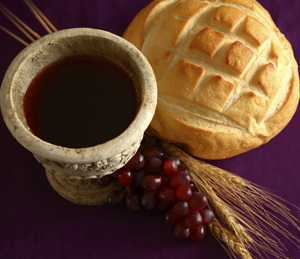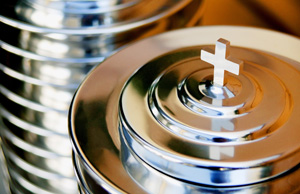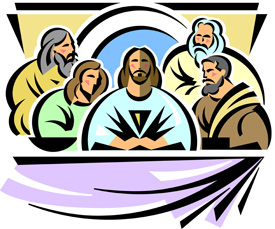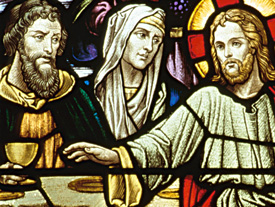You probably know someone who can’t stand the sight of blood—the man who considered becoming an emergency medical technician but couldn’t deal with the blood, the mom who nearly passes out while washing off her child’s bloody knee, the friend who avoids any movie with gory scenes. Blood can make us extremely uncomfortable.
But the death of Jesus, horrifically bloody, is the centerpiece of our salvation. We can’t afford to close our eyes or look the other way.
“For you know that it was not with perishable things such as silver or gold that you were redeemed . . . but with the precious blood of Christ” (1 Peter 1:18, 19).
“In him we have redemption through his blood, the forgiveness of sins, in accordance with the riches of God’s grace” (Ephesians 1:7).
“But now in Christ Jesus you who once were far away have been brought near by the blood of Christ” (Ephesians 2:13).
“The blood of Jesus, his Son, purifies us from all sin” (1 John 1:7).
Revelation 5 records a gory scene. The apostle John is weeping because no one in the throne room of Heaven is found worthy to open the scroll. John is told, “Do not weep! See, the Lion of the tribe of Judah, the Root of David, has triumphed. He is able to open the scroll” (v. 5). Expecting the Lion, John sees instead a “Lamb, looking as if it had been slain” (v. 6). The Lamb takes the book, and everyone falls down to worship him. They sing a new song, saying, “You are worthy to take the scroll and to open its seals, because you were slain, and with your blood you purchased for God persons from every tribe and language and people and nation” (v. 9).
Jesus poured out his blood, his very life, to bring redemption, forgiveness, purification, and reconciliation.
Jesus also ordained the way we would ponder and recall his sacrifice. He didn’t ask us to read graphic descriptions. He didn’t order reenactments. He didn’t prescribe paintings or movies. He commanded the drinking of the cup and eating the unleavened bread from the Passover meal. He could have asked for the slaying of lambs and told us to use their blood to paint door frames. But because of his death, no more sacrifice was needed. None better could be offered.
Our memorial is simple. But we cannot afford to forget that real blood was poured out, real flesh was torn. As it says in the old hymn, “See, from his head, his hands, his feet, sorrow and love flow mingled down.” By his wounds we are healed.
________________
Nancy Karpenske is women’s ministry director at LifeBridge Christian Church in Longmont, Colorado.











 For me, this is an uncomfortable arrangement. I look up and see strangers sitting at my table. Some clearly are of Indian ancestry, some British, some African, and all of them are enjoying fish and chips or bangers (sausages) and beans, happily oblivious to my discomfort. I try and remember to turn my fork upside-down and put it in my left hand before they notice I’m a Yank. I mean, who invited them to my table?
For me, this is an uncomfortable arrangement. I look up and see strangers sitting at my table. Some clearly are of Indian ancestry, some British, some African, and all of them are enjoying fish and chips or bangers (sausages) and beans, happily oblivious to my discomfort. I try and remember to turn my fork upside-down and put it in my left hand before they notice I’m a Yank. I mean, who invited them to my table? Few of us give much thought to where our food is produced, or by whose hands and efforts it comes to our table. To us, a loaf of bread is just that. Although we may know better, we tend to think of it only in its completed, whole, and sliced-up form. One could almost imagine a great chugging piece of farm machinery, slowly making its way through a vast field of plastic-wrapped loaves of sliced sandwich bread.
Few of us give much thought to where our food is produced, or by whose hands and efforts it comes to our table. To us, a loaf of bread is just that. Although we may know better, we tend to think of it only in its completed, whole, and sliced-up form. One could almost imagine a great chugging piece of farm machinery, slowly making its way through a vast field of plastic-wrapped loaves of sliced sandwich bread.

